
![]() Evocative educational tours ‘on demand’ are offered by Muve Education at the Museums Civici of Venice: these are thematic routes that offer visitors an exclusive and engaging experience. Led by specialised museum educators, the activities are aimed at informal groups of adults up to a maximum of 25 people; they can take place every day during museum opening hours and at specific times, and are booked online independently after checking availability.
Evocative educational tours ‘on demand’ are offered by Muve Education at the Museums Civici of Venice: these are thematic routes that offer visitors an exclusive and engaging experience. Led by specialised museum educators, the activities are aimed at informal groups of adults up to a maximum of 25 people; they can take place every day during museum opening hours and at specific times, and are booked online independently after checking availability.
Information on how to participate and fees can be found at the bottom of this page.
_
![]() Painted Gold. El Greco and Art between Crete and Venice
Painted Gold. El Greco and Art between Crete and Venice
Venice, Doge’s Palace
From 30 April to 29 September, 2025
Guided itinerary
A golden thread links the historical and artistic events, the diplomatic balances and the devotion in the Mediterranean area along the route between Venice and Crete, or Candia as it was known from the thirteenth century, when it became the pearl of the Serenissima’s Stato da Mar. Painted gold, which makes icons shine with spiritual light, is the protagonist of the exhibition at the Doge’s Palace, and provides the backdrop to a long history of intense pictorial relations between the two islands. After the fall of Constantinople in 1453, Candia became the most important artistic centre for the ancient Byzantine tradition, which saw the involvement of over a hundred workshops of ‘madoneri’, especially iconographers producing popular devotional images. At the same time, Venice – like a new Byzantium – welcomed a growing influx of artworks and artists from the Aegean islands. Iconographers, or painters of icons, travelled or immigrated between Crete, the Ionian Islands, and the Venetian capital. This led to a unique synthesis between the native Byzantine courtly tradition – already an essential element of Venetian artistic heritage – and the Western figurative language, which evolved from late Gothic to the Renaissance, becoming more human-centred, naturalistic, and dynamic. A fortunate relationship developed and remained unbroken between the golden age of the Venetian Renaissance in the fifteenth and sixteenth centuries and the early nineteenth century, marked by moments of always original symbiosis. The guided tour illustrates this unique pictorial journey through seven sections of the exhibition; at the heart of this fascinating narrative of history and painting stands the most famous and extraordinary figure of the ‘school’: Dominikos Theotokopoulos, or El Greco (1541–1614). Born in Crete, he began his training within the post-Byzantine tradition before making his way to Venice around 1567 – an essential step for artists of the time.
Duration: 1,30 h
Languages: Italian, English
![]()
Giulio Aristide Sartorio. Il Poema della vita umana
Venice, Ca’ Pesaro – International Gallery of Modern Art
From 16 May to 28 September, 2025
Guided tour
In the spring of 1906, at the invitation of the secretary general of the Biennale, Antonio Fradeletto, Giulio Aristide Sartorio agreed to realise the pictorial cycle called Il Poema della vita umana – ‘The Poem of Human Life’ – to be placed in the Central Hall of the 1907 International Exhibition.
In the four main scenes – Light, Darkness, Love and Death – which alternate with ten vertical canvases (depicting Grace and Art), the artist offers a dramatic vision of existence, from birth to death. Between the two extremes are the allegories of Darkness and the divergence between the figures of Eros and Himeros, good and evil love.
Installed for the inauguration of the 1907 exhibition, the fourteen scenes remained in situ for the following edition of the Biennale and then made their way to Ca’ Pesaro as a gift from King Victor Emmanuel III to the Galleria Internazionale d’Arte Moderna di Venezia in 1909.
Thanks to the Italian and foreign works present at the Biennales in the same years, which later became part of the Ca’ Pesaro collections, and to the extensive documentation from various archives, the guided tour of the exhibition allows visitors to understand fully the meaning of Sartorio’s great cycle and the significance of this splendid page in twentieth-century Italian painting.
Duration: 1,30 h
Languages: Italian, English, French and Spanish
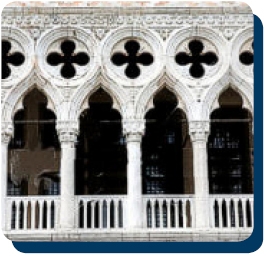 The rooms of power
The rooms of power
The itinerary focuses on the institutional rooms in the Doge’s Palace, where imposing pictorial cycles and splendid sculptural and ornamental motifs adorn the rooms that used to be the prestigious seats of the Serenissima’s magistracies. An interactive tour will highlight the workings of the complex state machinery of the Republic of Venice and the majestic iconographic programme promoted by the Venetian ruling class to establish and celebrate the myth of Venice.
The activity also includes a short visit to the Bridge of Sighs and the New Prisons.
Duration: 1,30 h
Languages Italian, English, French, Spanish, German
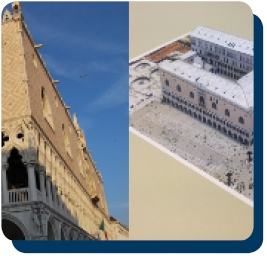 A palace to decipher through architecture and sculpture
A palace to decipher through architecture and sculpture
A dynamic and engaging itinerary focusing in particular on the building and its history, on the phases of construction that led to this extraordinary ‘architectural machine’ and its splendid sculptural array. A not-to-be-missed ‘journey’ to discover the truly unique Venetian interpretation of the Gothic and Renaissance languages that developed during the centuries of the Republic’s greatest splendour. A final surprise will allow participants to try out a fun practical activity at home, closely linked to the visit.
Duration: 1,30 h
Languages Italian, English, French, Spanish
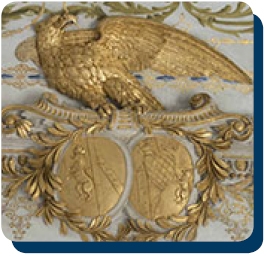 From Doges to Emperors
From Doges to Emperors
From the Doge’s Palace – the heart of the Venetian Republic – to the nineteenth-century Royal Palace at the other end of St. Mark’s Square. The participants not only experience the magnificence and splendour of these buildings but are offered the opportunity to make out the visible traces left by the complex and often dramatic historical development which occurred as the Venetian Republic ended and came under the dominion of Napoleonic France and then Habsburg Austria. At the same time, however, they see how Venice maintained its identity and the fundamentally Italian nature of its art. A single ticket for a truly “unique” visit.
Meeting point with operators supplying the activities in Doge’s Palace.
Duration: 2,30 h
Languages Italian, English, French
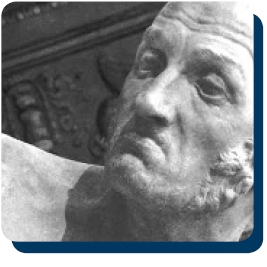 Museo Correr: a museum with a thousand faces
Museo Correr: a museum with a thousand faces
A thematic itinerary through the Museo Correr, a sort of ‘Wunderkammer‘, to discover the treasures and curiosities in the collections that gave rise to Venice’s civic museums: from the collection left by the Venetian collector Teodoro Correr (1750-1830), after whom the museum is named, to the various donations and acquisitions that bear witness to the cosmopolitan dimension of the city. Works from some of the museum’s sections will be examined, including the Neoclassical Rooms in the Napoleonic Wing, the nineteenth-century seat of kings and emperors, which house the extraordinary collection of Antonio Canova. Then we see the rooms of Empress Sissi, including the Audience Room, the study, the bedroom (with its rich tapestry and boudoir) and the dressing room personalised with fine furnishings from the Napoleonic era, and the rooms dedicated to the discovery of Venetian history and civilisation: from daily life to institutions, from maritime enterprises to city festivals.
Duration: 1,30 h
Languages Italian, English, Spanish
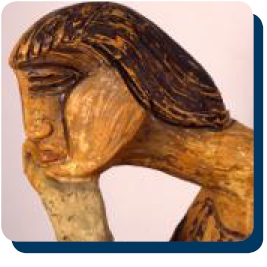 The forms of the modern. Sculpture at Ca’ Pesaro
The forms of the modern. Sculpture at Ca’ Pesaro
From antiquity to the end of the nineteenth century sculpture had a purely monumental and celebratory function, clearly recognisable in isolated threedimensional works and in those inserted into architectural structures. This tradition was interrupted at the beginning of the twentieth century, when a profound renewal promoted anti-monumentality and antirhetoric as its primary vocation, leading to a continuous process of expressive experimentation, to the use of unusual materials and the breaking down of the canonical distinctions between painting and sculpture. Through a careful selection of works in the museum, the tour documents the main phases of this sculptural renewal: from the modern turning point in late nineteenth-century sculpture effected, albeit in different ways and forms, by Auguste Rodin and Medardo Rosso, to Adolfo Wildt’s synthesis of Expressionism and Classicism, and to Arturo Martini’s anti-classical figures, considered among the emblems of the twentieth century. The itinerary then moves on to the vitalist form of expression adopted by Henry Moore in his anthropomorphic forms, and the Pop Art sculptures and installations of the Sonnabend Collection, from Andy Warhol to Claes Oldenburg.
Duration: 1,30 h
Languages: Italian, English, French, Spanish
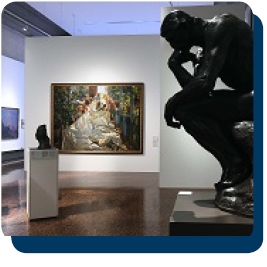 ‘Modern’ Venice: Ca’ Pesaro and the New Century of Art
‘Modern’ Venice: Ca’ Pesaro and the New Century of Art
A breathtaking tour through the permanent collections of the Galleria Internazionale d’Arte Moderna to understand better the many trends in twentieth-century art, comparing great masterpieces from the International Art Exhibitions (Biennales) such as Judith II (Salome) by Gustav Klimt or Sewing the Sail by Joaquin Sorolla and the works of the Ca’ Pesaro Rebels, a varied generation of young, anti-academic Venetian artists, including Arturo Martini, Gino Rossi and Felice Casorati. The itinerary is rounded off by the refurbishment of room 15 with other iconic Pop Art masterpieces from the Sonnabend collection, including some by Warhol (Nine Jackies, White Brillo Boxes), Lichtenstein (Little Aloha, Wall Explosion II), Rosenquist and Wesselmann.
Duration: 1,30 h
Languages: Italian, English, French, Spanish
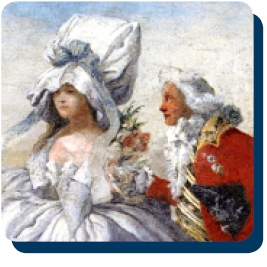 From Tiepolo to Canaletto. The last great season of Venetian painting
From Tiepolo to Canaletto. The last great season of Venetian painting
The extraordinary and sumptuous rooms of the Palazzo, rich in original furniture, fittings and furnishings of the period, the fine decorations, exquisitely crafted tapestries and official portraits tell us of a Venice that was still opulent and powerful, carefree and joyful. But a careful reading of the works by some of the leading exponents of the last great season of Venetian painting, such as Tiepolo, Canaletto, Longhi and Guardi, will also bring to light another face of reality, that of a Venice that is beginning the long and slippery journey towards modernity.
Duration: 1,30 h
Languages: Italian, English, French, Spanish
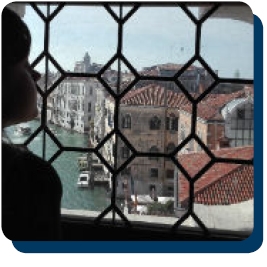 How Venice works
How Venice works
Understanding how Venice is made, how it works and how it worked in the past marks the first step towards experiencing, respecting and enjoying the city itself. In this special itinerary, Ca’ Rezzonico, a grand aristocratic palazzo built between the seventeenth and eighteenth centuries, lends itself perfectly as an example for understanding why the city’s dense urban fabric is interrupted by so many campi and courtyards, why there is a well in all thesecampi and courtyards, why the chimneys have bizarre shapes and, finally, how the houses and palazzi manage to stay upright in the water. The tour will start from the museum to reach the nearby Campo San Barnaba where we will see the wellhead in the center. Then we’ ll enter again at Ca’ Rezzonico by the water entrance to the palace on the Grand Canal before beginning an itinerary that leads up and up to the… attic!
Each group will receive a brief guide to the museum and a glossary of the technical terms used along the way.
ATTENTION: A PART OF THE THIRD FLOOR (PINACOTECA EGIDIO MARTINI) IS CLOSED FOR RESTORATION WORKS.
Duration: 1,30 h
Languages Italian, English, French
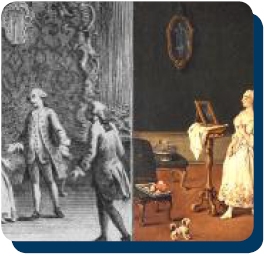 From Casa Goldoni to Ca’ Rezzonico: a journey through eighteenth-century Venice
From Casa Goldoni to Ca’ Rezzonico: a journey through eighteenth-century Venice
The experience aims to explore a variety of cultural and social aspects of the eighteenth-century Venice through the dialogue and comparison between two protagonists of the century, Carlo Goldoni and Pietro Longhi, in the two museums that preserve their memory, Ca’ Centanni (Casa Goldoni) and Ca’ Rezzonico.
The tour between the two museums is followed independently. The meeting point with the operator supplying the activities is at Casa Goldoni.
Duration: 2,30 hours
Languages Italian, English
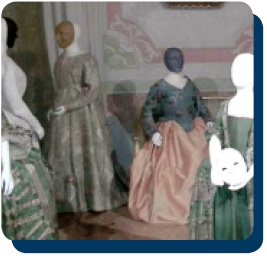 Voyage through an eighteenth-century home
Voyage through an eighteenth-century home
In the former home of the aristocratic Mocenigo family, the thematic tour takes visitors on a voyage of discovery past original clothing, accessories and fabrics, displayed alongside furnishings and works of art in what is effectively a ‘house-museum’ documenting the taste of an era, a time when Venice was one the main centres in Europe for the production not only of textiles but also of cosmetics and spices.
Notes on architectural barriers: No lift; Staircase to reach the piano nobile of the museum; toilets at the first floor are not wheelchair-accessible; laboratory room at the ground floor.
Duration: 1,30 h
Languages: Italian, English, French, Spanish
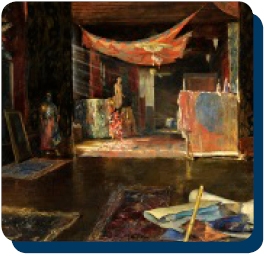 In the ‘studio-home’ of Mariano Fortuny
In the ‘studio-home’ of Mariano Fortuny
For the reopening of the Museo di Palazzo Fortuny with a completely new layout dedicated to the multifaceted and industrious genius of Mariano Fortuny y Madrazo (1871-1949) and his muse and wife Henriette Nigrin, a special thematic itinerary follows in the footsteps of this extraordinary exponent of the Venetian and European art scene at the cusp of the nineteenth and twentieth centuries, in what was once his home and studio in Campo San Beneto in the evocative setting of Palazzo Pesaro degli Orfei. The tour takes place on the first floor of the palace, an exceptional example of Venetian floral Gothic, where the ‘spirit’ of the Genius loci, Spanish by origin but Venetian by adoption, still hovers: in the salon, furnished in the ‘Fortuny style’, and in the adjoining rooms, the life, art and collecting of the family, who lived here from 1898 to 1965, are revealed. From his first experiences with painting, copying the great artists of the past along with the works of his father Mariano Fortuny y Marsal (1838-1874), visitors move on to the Wagnerian cycle, and from the splendid printed fabrics to the pleated dresses, including the legendary ‘Delphos’ – creations of Hellenistic inspiration – and so to the innovations in the field of stage design and lighting, such as the ingenious ‘cupola’ with which he revolutionised the theatre of the early 1900s.
The itinerary provides a fascinating journey revealing the extraordinary eclectic genius of an artist who perfectly embodied the concept of ‘total art’ so dear to Wagner.
Duration: 1,30 h
Languages: Italian, English, French, Spanish
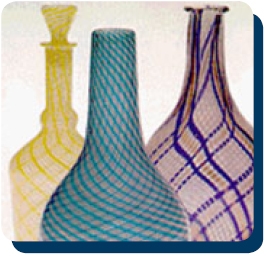 Glassmaking: an art and its history
Glassmaking: an art and its history
The thousand-year craft of Venetian glass-making is recounted in a guided tour through the rooms of the museum, which house some of the famous works that made, and continue to make, the city’s glass legendary throughout the world – not only for the technical skill of its craftsmen but also for the creativity of the artists and designers who have drawn inspiration from the huge potential of glass as a material.
Duration: 1,30 h
Languages: Italian, English, Spanish
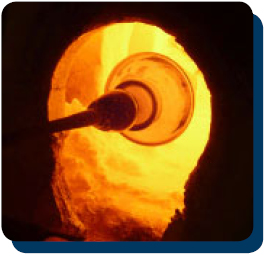 Glassmaking: an art and its history (with glassworking demonstration)
Glassmaking: an art and its history (with glassworking demonstration)
The thousand-year craft of Venetian glass-making is recounted in a guided tour through the rooms of the new museum, which house some of the famous works that made, and continue to make, the city’s glass legendary throughout the world – not only for the technical skill of its craftsmen but also for the creativity of the artists and designers who have drawn inspiration from the huge potential of glass as a material. The visit to the Glass museum combines a visual experience with the chance to actually touch some of the materials and instruments, gaining further insight into the “secrets” shared by the great master glassmakers. The itinerary is completed with a glassworking demonstration at the Abate Zanetti Glass School.
Duration: 2 h
Languages: Italian, English
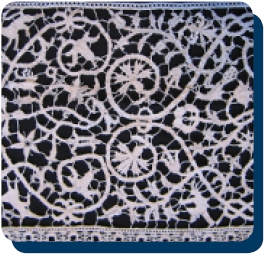 The thread of the lagoon
The thread of the lagoon
A guided tour to discover the rich collection of lace from the sixteenth up to the twentieth century shown in the museum, that is housed in the amazing seat of the ancient School were the complicated original techniques of this art were learnt by the young girls of the island.
Duration: 1 h
Languages: Italian, English, Spanish
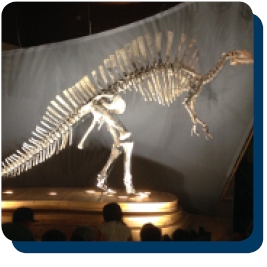 Nature and museum: stories and collections
Nature and museum: stories and collections
A visit to this museum is a fascinating experience that brings many different senses into play: in each room, touch, sight and hearing all contribute to our understanding. And each section of the museum is a complete unit, making the place a series of museums within the museum. The first “journey” one undertakes is to the origins of life on earth, exploring fossils and the world of dinosaurs. Then one looks at how natural history collections themselves have evolved, from the days of ancient explorers to those of modern scientific researchers. And finally there is a fascinating section that looks at the enormous variety in the strategies upon which the maintenance of life depends – from movement to nutrition.
Duration: 1,30 hours.
Languages: Italian, English
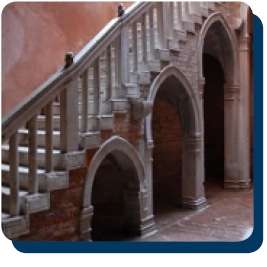 Carlo Goldoni in 18th century Venice
Carlo Goldoni in 18th century Venice
Starting from the evocative Gothic courtyard of Ca’ Centanni in San Tomà, the house in which Carlo Goldoni was born, the itinerary focuses on the life of the great Venetian playwright and the characteristics of the theatrical arts of his time, when there were fifteen theatres in the city, making Venice one of the capitals of European culture. The visit aims to retrace and understand the great theatrical and cultural revolution brought about by Goldoni in the eighteenth century, which substituted the masks of the commedia dell’arte for stories drawn from real life. The visit is rounded off by the wonderful puppet theatre on display in the museum.
Duration: 1 h
Languages Italian, English, French
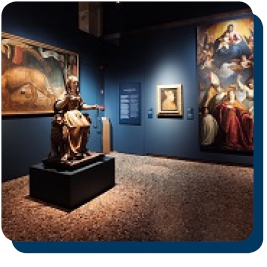 VENETIA 1600 Virtual Tour: a history waiting to be discovered!
VENETIA 1600 Virtual Tour: a history waiting to be discovered!
A truly unprecedented and evocative chance to visit the exhibition on the 1600s in Venice at the Doge’s Palace is available to the public through a Virtual Tour.
The activity, which is characterised by privileged and exclusive viewpoints, can be streamed remotely and will allow visitors to touch on all the aspects and phases – the ‘births and rebirths’ – of this extraordinary city: from its legendary ‘foundation’ in 421, to the development of the Venetian state over the centuries, with its maritime empire, trade and the great events that have marked its history, right up to the present day. To enjoy the virtual tour you need a computer or tablet and a good internet connection.
Find out more >
The activities must be booked online >>>
For last minute requests (activities scheduled within 7 days) please write to education@fmcvenezia.it or call +39 0412700370 (9.30-12.30 Mondays and Wednesdays), subject to availability and advance payment by credit card, see info below
What and when:
– Educational tours
– Average duration 1.30 hours
– All year round
Target audience:
– aged 15 and over
How to book:
– online booking: click on the red ‘choose and book’ button ➝ tick the ‘adults on-demand’ box ➝ click on the activity of your choice and follow the instructions
Prices and payment:
Information
ITINERARIES AND ACTIVITIES MUVE EDUCATION
– Telephone: +39 041 2700370 (hours: 9.30-12.30 Mondays and Wednesdays)
– Email education@fmcvenezia.it (from Monday to Friday, excluding holidays)
Activities can be booked online here: CHOOSE AND BOOK >>> except for LAST MINUTE requests which must be made, subject to availability, exclusively by telephone or e-mail.